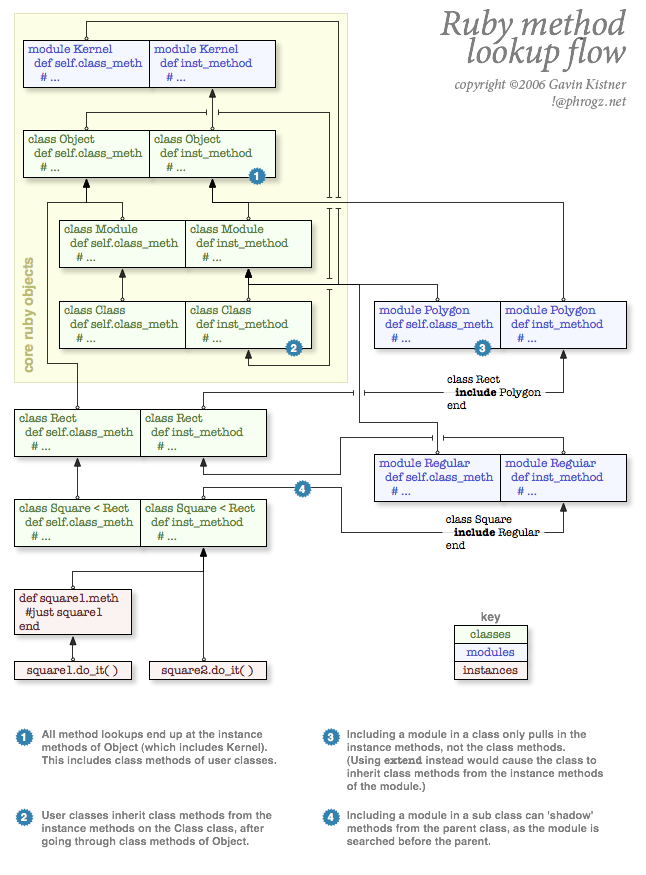I have a simple class A declared as follows:
class A
def foo
p “A::foo”
end
def boo
p “A::boo”
end
end
Then I have a simple module ModuleA declared as follows:
module ModuleA
def module_a_foo
p ‘ModuleA::module_a_foo’
end
def foo
p ‘ModuleA::foo’
end
end
I declare an instance of class A as follows:
a1 = A.new
a1.methods.sort
I get all the methods that are declared in class A in my irb console
when I call a1.foo it prints the following as expected
"A::foo’
Now I reopen class A and include moduleA into this class as follows
class A
include ModuleA
end
Now when I type a.methods.sort as expect it displays the methods from
ModuleA also
When I call ‘a1.module_a_foo’ it prints the following as expected.
“ModuleA::module_a_foo”
However now when I call a1.foo I am expecting it to print
“ModuleA::foo” instead I still get “A::foo”.
I am expecting it to print ModuleA::foo because the method foo in
ModuleA would overwrite the method foo when I include ModuleA after
reopening the class A later. Am I missing something here, can anyone
help me understand this.
Kiran K.
